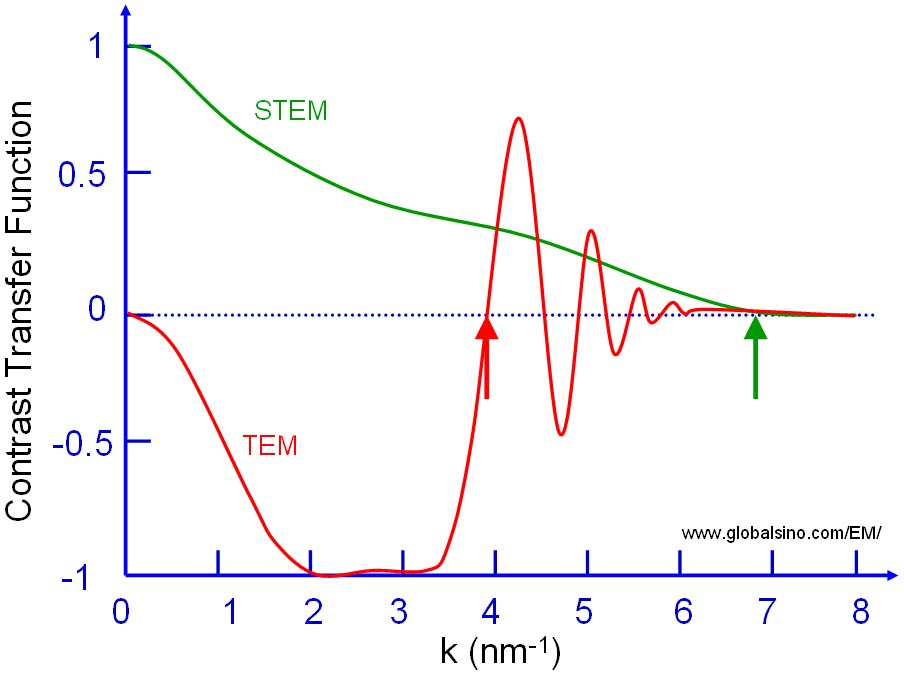=================================================================================
Two main contrast transfer functions (CTFs) are very useful concepts in electron microscopes:
i) The bright field CTF in conventional TEM.
ii) The electron Ronchigram CTF (in STEM) derived by Cowley. This concept is inherently more complicated since it is not isoplanatic.
The intensity (I(k)) of Ronchigram pattern in STEM mode is given by (see page3590),
 -------------------- [2754] -------------------- [2754]
where,
h -- The higher-differential term of the wave aberration function.
And, the term  represents the contrast transfer function (CTF). represents the contrast transfer function (CTF).
Figure 2754 shows the schematic comparison between contrast transfer functions (CTFs) for a parallel-beam CTEM and a STEM. For TEM imaging, the higher frequencies should be excluded by a proper objective aperture marked by the red arrow because they introduce contrast reversals. For STEM imaging, a proper probe-forming aperture should be applied to match the need of the spatial frequency marked by the green arrow.

Figure 2754. Schematic illustration of contrast transfer function (CTF) for: (a) A parallel-beam CTEM and (b) A STEM.
|
